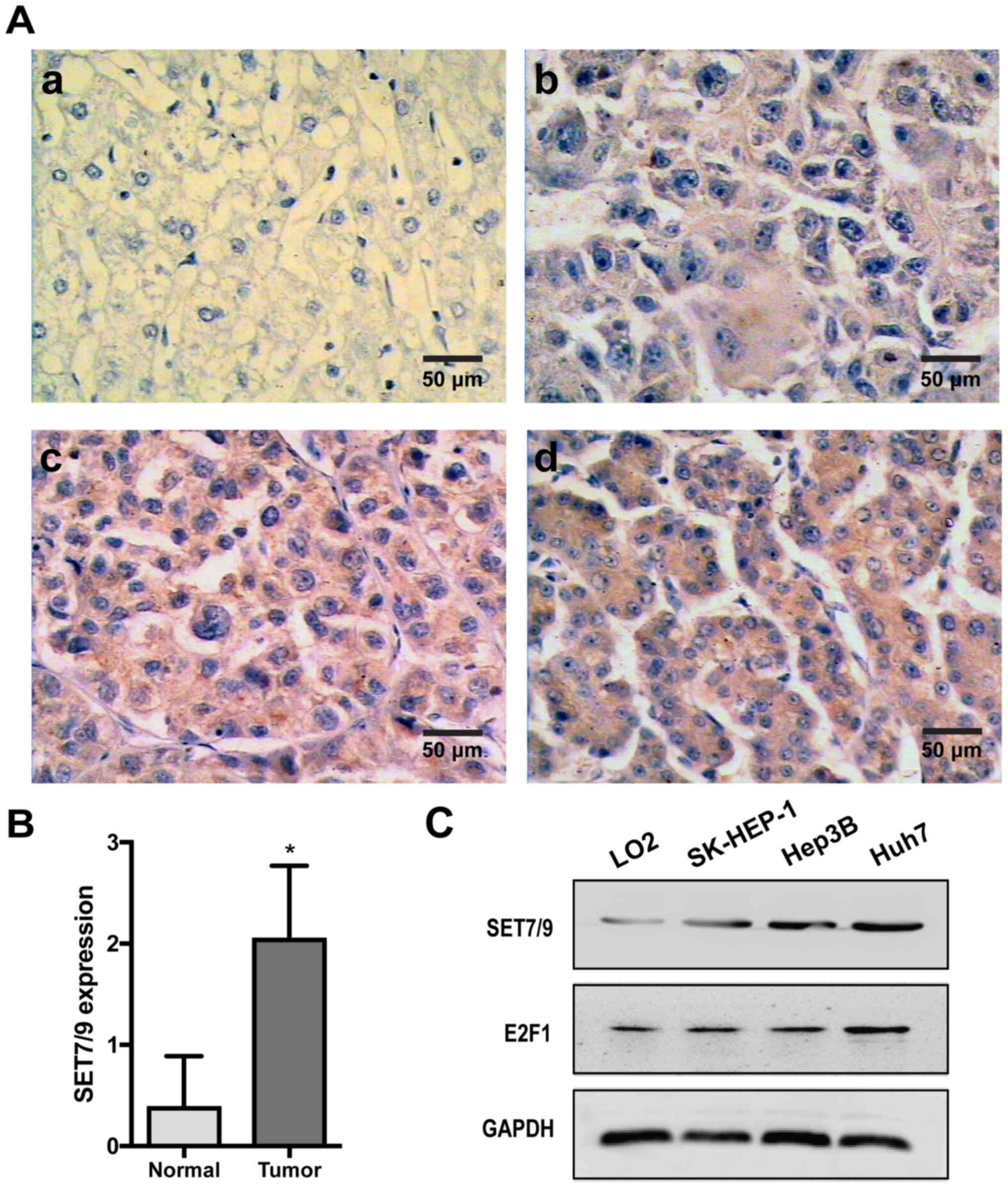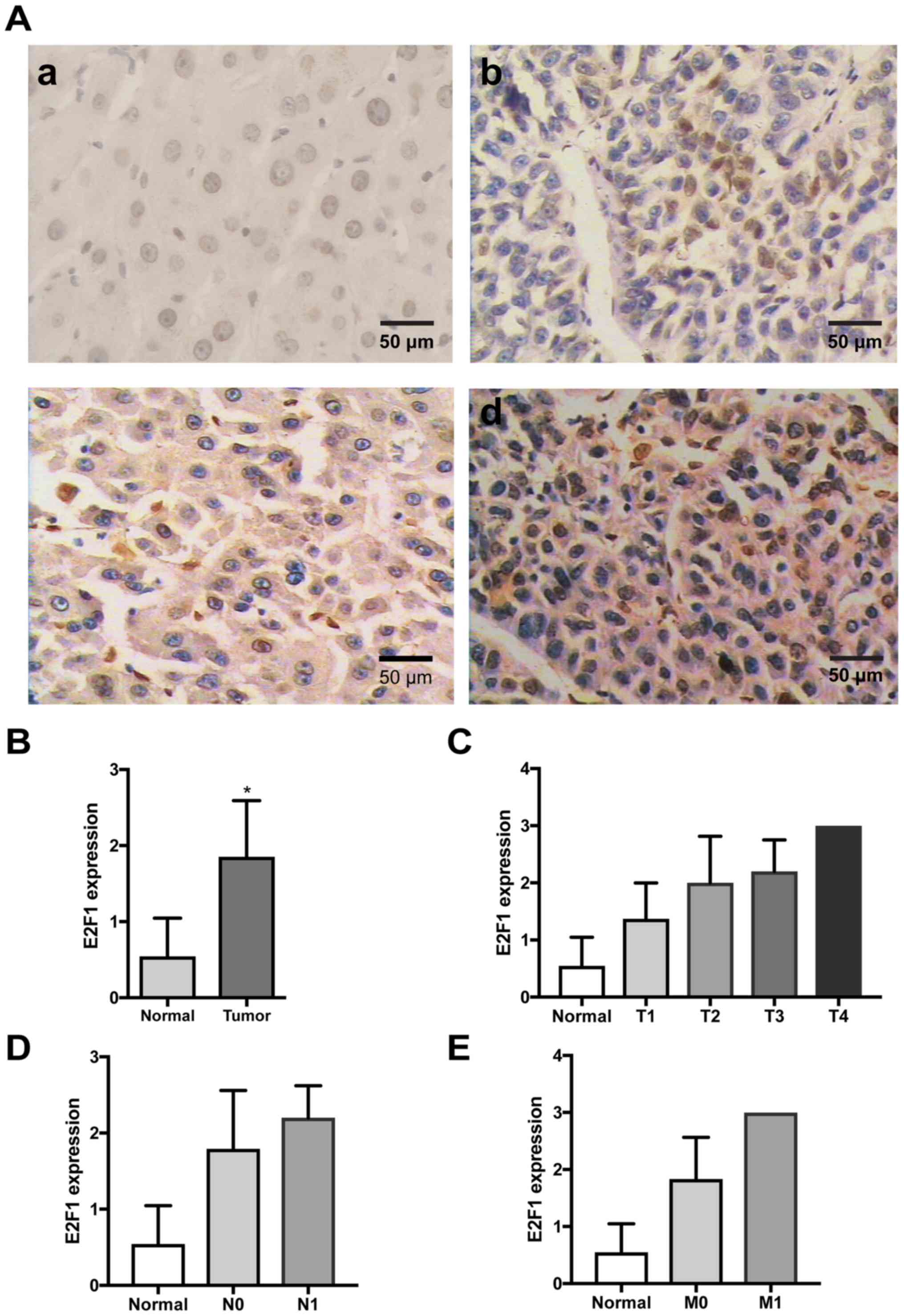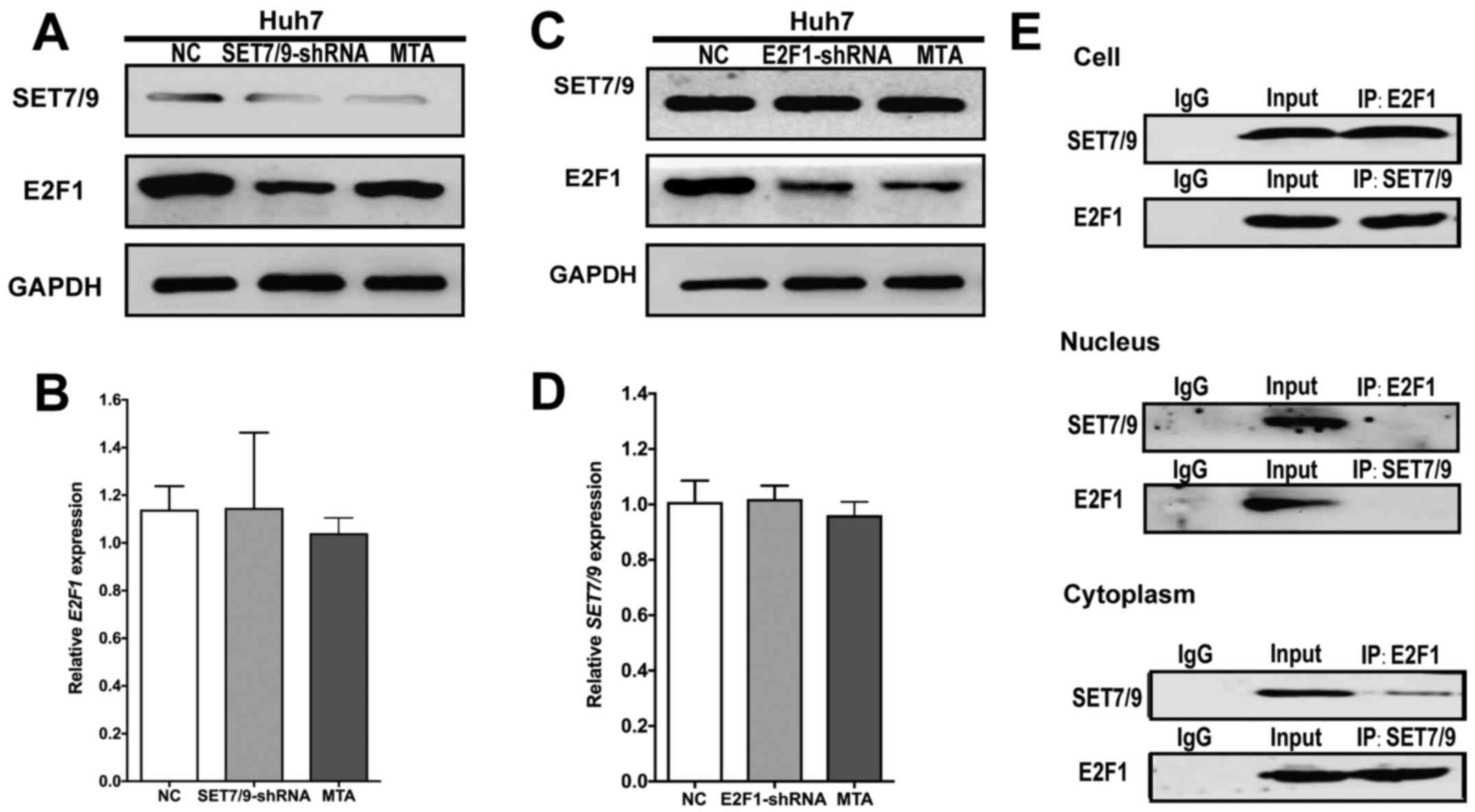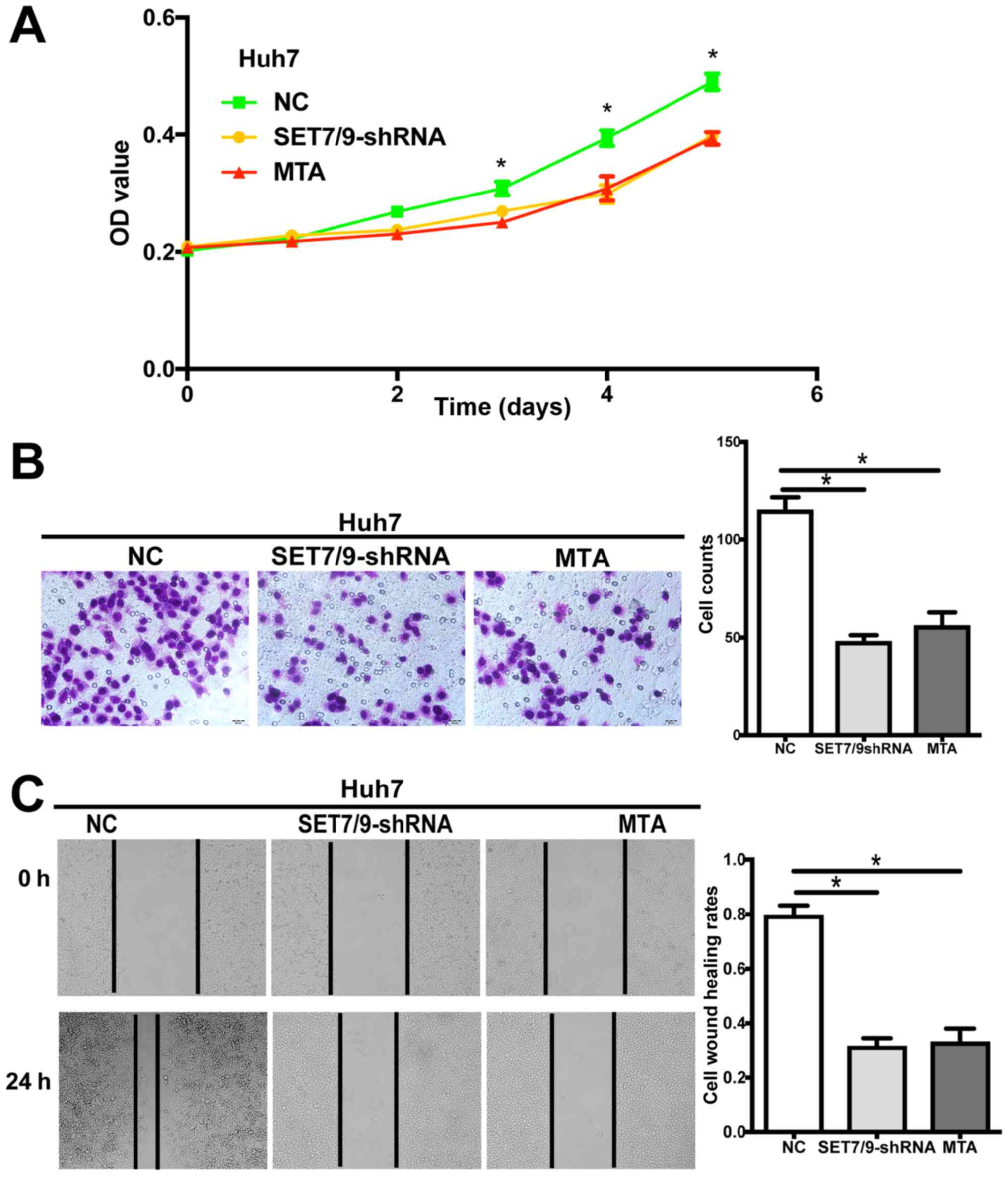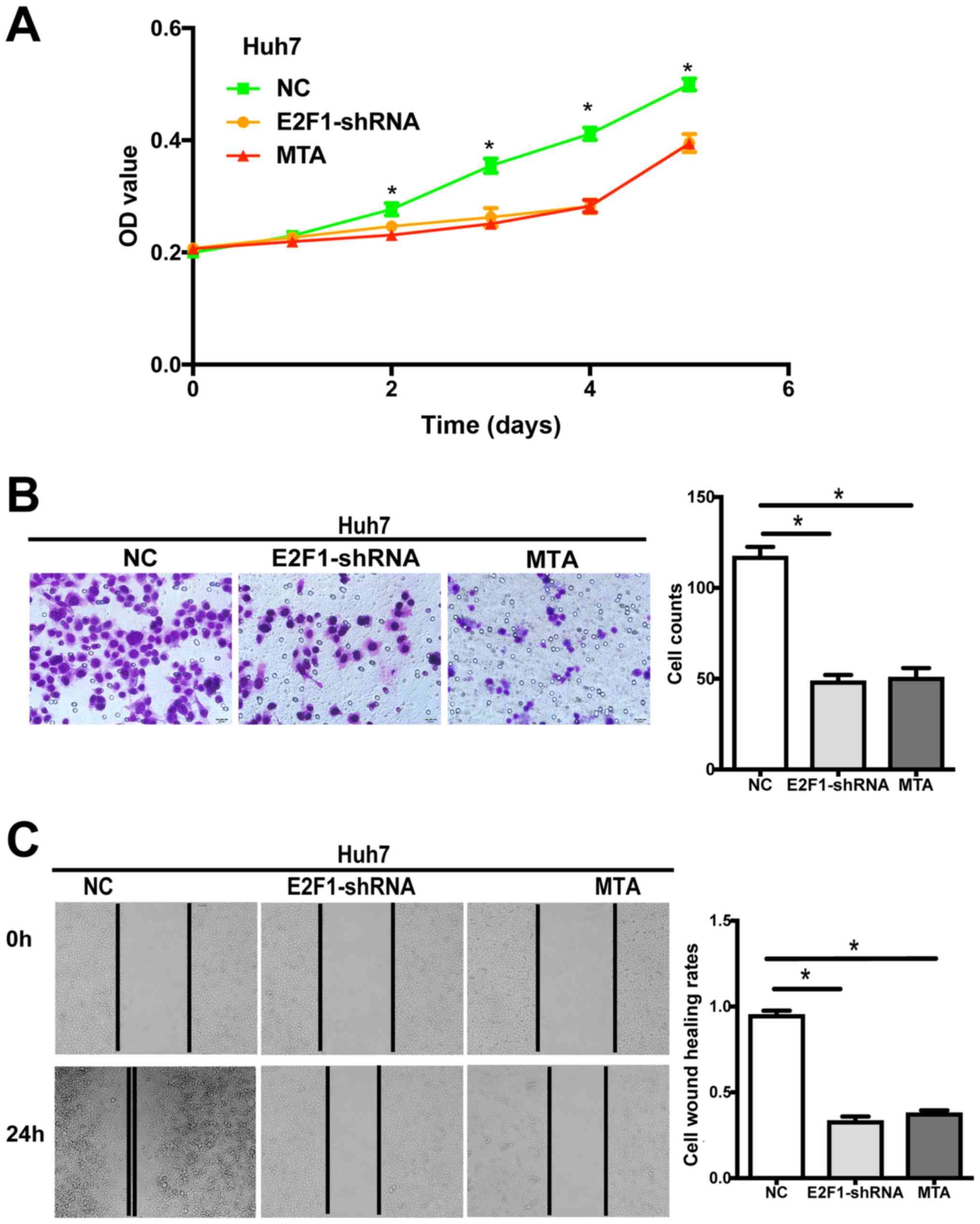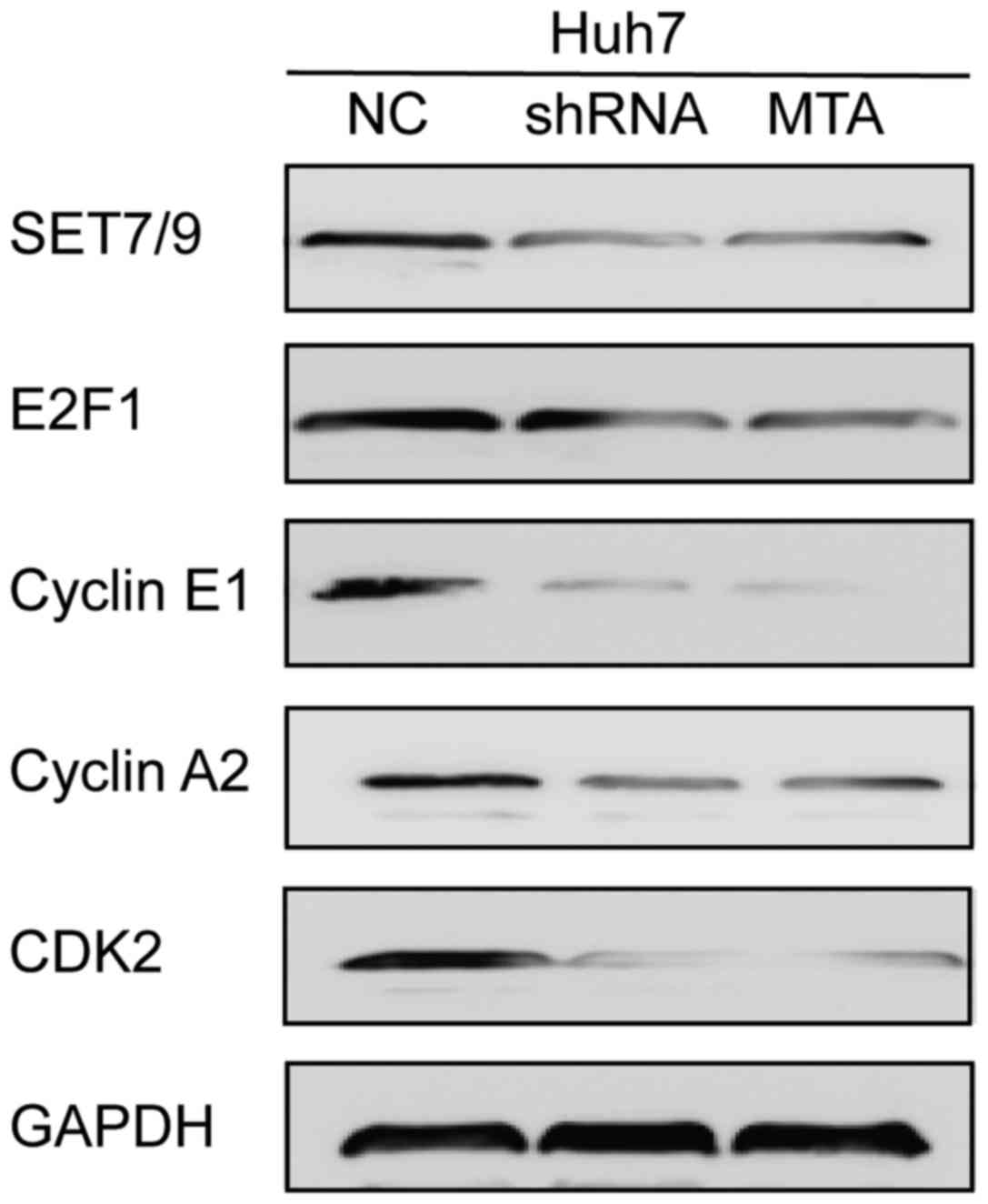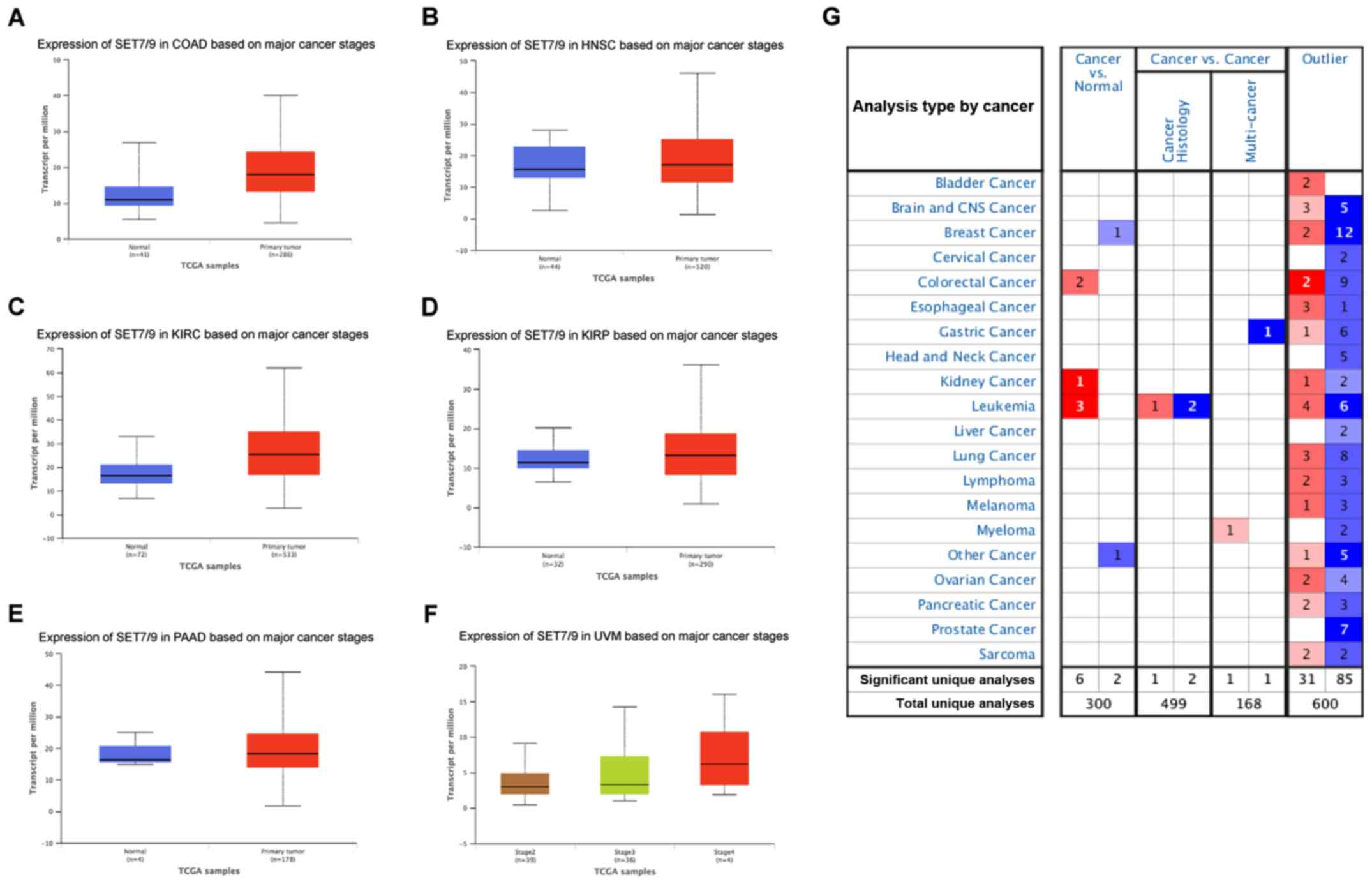|
1
|
Chen W, Zheng R, Baade PD, Zhang S, Zeng
H, Bray F, Jemal A, Yu XQ and He J: Cancer statistics in China,
2015. CA Cancer J Clin. 66:1152016. View Article : Google Scholar : PubMed/NCBI
|
|
2
|
Bruix J, Gores GJ and Mazzaferro V:
Hepatocellular carcinoma: Clinical frontiers and perspectives. Gut.
63:8442014. View Article : Google Scholar : PubMed/NCBI
|
|
3
|
Lu CY, Chen SY, Peng HL, Kan PY, Chang WC
and Yen CJ: Cell-free methylation markers with diagnostic and
prognostic potential in hepatocellular carcinoma. Oncotarget.
8:6406–6418. 2017.PubMed/NCBI
|
|
4
|
Toffanin S, Hoshida Y, Lachenmayer A,
Villanueva A, Cabellos L, Minguez B, Savic R, Ward SC, Thung S,
Chiang DY, et al: MicroRNA-based classification of hepatocellular
carcinoma and oncogenic role of miR-517a. Gastroenterology.
140(1618–1628): e162011.
|
|
5
|
Fujimoto A, Totoki Y, Abe T, Boroevich KA,
Hosoda F, Nguyen HH, Aoki M, Hosono N, Kubo M, Miya F, et al:
Whole-genome sequencing of liver cancers identifies etiological
influences on mutation patterns and recurrent mutations in
chromatin regulators. Nat Genet. 44:760–764. 2012. View Article : Google Scholar : PubMed/NCBI
|
|
6
|
Shen J, Wang S, Zhang YJ, Kappil M, Wu HC,
Kibriya MG, Wang Q, Jasmine F, Ahsan H, Lee PH, et al: Genome-wide
DNA methylation profiles in hepatocellular carcinoma. Hepatology.
55:1799–1808. 2012. View Article : Google Scholar : PubMed/NCBI
|
|
7
|
Anwar SL and Lehmann U: DNA methylation,
microRNAs, and their crosstalk as potential biomarkers in
hepatocellular carcinoma. World J Gastroenterol. 20:7894–7913.
2014. View Article : Google Scholar : PubMed/NCBI
|
|
8
|
Cancer Genome Atlas Research Network:
Comprehensive and integrative genomic characterization of
hepatocellular carcinoma. Cell. 169:13272017. View Article : Google Scholar : PubMed/NCBI
|
|
9
|
Wang H, Cao R, Xia L, Erdjument-Bromage H,
Borchers C, Tempst P and Zhang Y: Purification and functional
characterization of a histone H3-lysine 4-specific
methyltransferase. Mol Cell. 8:1207–1217. 2001. View Article : Google Scholar : PubMed/NCBI
|
|
10
|
Nishioka K, Chuikov S, Sarma K,
Erdjument-Bromage H, Allis CD, Tempst P and Reinberg D: Set9, a
novel histone H3 methyltransferase that facilitates transcription
by precluding histone tail modifications required for
heterochromatin formation. Genes Dev. 16:479–489. 2002. View Article : Google Scholar : PubMed/NCBI
|
|
11
|
Ivanov GS, Ivanova T, Kurash J, Ivanov A,
Chuikov S, Gizatullin F, Herrera-Medina EM, Rauscher F III,
Weinberg D and Barley NA: Methylation-acetylation interplay
activates p53 in response to DNA damage. Mol Cell Biol.
27:6756–6769. 2007. View Article : Google Scholar : PubMed/NCBI
|
|
12
|
Kurash JK, Lei H, Shen Q, Marston WL,
Granda BW, Fan H, Wall D, Li E and Gaudet F: Methylation of p53 by
Set7/9 mediates p53 acetylation and activity in vivo. Mol Cell.
29:392–400. 2008. View Article : Google Scholar : PubMed/NCBI
|
|
13
|
Ea CK and Baltimore D: Regulation of
NF-kappaB activity through lysine monomethylation of p65. Proc Natl
Acad Sci USA. 106:18972–18977. 2009. View Article : Google Scholar : PubMed/NCBI
|
|
14
|
Yang J, Huang J, Dasgupta M, Sears N,
Miyagi M, Wang B, Chance MR, Chen X, Du Y, Wang Y, et al:
Reversible methylation of promoter-bound STAT3 by histone-modifying
enzymes. Proc Natl Acad Sci USA. 107:21499–21504. 2010. View Article : Google Scholar : PubMed/NCBI
|
|
15
|
Wang D, Zhou J, Liu X, Lu D, Shen C, Du Y,
Wei FZ, Song B, Lu X, Yu Y, et al: Methylation of SUV39H1 by SET7/9
results in heterochromatin relaxation and genome instability. Proc
Natl Acad Sci USA. 110:5516–5521. 2013. View Article : Google Scholar : PubMed/NCBI
|
|
16
|
Liu X, Wang D, Zhao Y, Tu B, Zheng Z, Wang
L, Wang H, Gu W, Roeder RG and Zhu WG: Methyltransferase Set7/9
regulates p53 activity by interacting with Sirtuin 1 (SIRT1). Proc
Natl Acad Sci USA. 108:1925–1930. 2011. View Article : Google Scholar : PubMed/NCBI
|
|
17
|
Lezina L, Aksenova V, Fedorova O, Malikova
D, Shuvalov O, Antonov AV, Tentler D, Garabadgiu AV, Melino G and
Barlev NA: KMT Set7/9 affects genotoxic stress response via the
Mdm2 axis. Oncotarget. 6:25843–25855. 2015. View Article : Google Scholar : PubMed/NCBI
|
|
18
|
Munro S, Khaire N, Inche A, Carr S and
Thangue La NB: Lysine methylation regulates the pRb tumour
suppressor protein. Oncogene. 29:2357–2367. 2010. View Article : Google Scholar : PubMed/NCBI
|
|
19
|
Carr SM, Munro S, Zalmas LP, Fedorov O,
Johansson C, Krojer T, Sagum CA, Bedford MT, Oppermann U and
Thangue La NB: Lysine methylation-dependent binding of 53BP1 to the
pRb tumor suppressor. Proc Natl Acad Sci USA. 111:11341–11346.
2014. View Article : Google Scholar : PubMed/NCBI
|
|
20
|
Shen C, Wang D, Liu X, Gu B, Du Y, Wei FZ,
Cao LL, Song B, Lu X, Yang Q, et al: SET7/9 regulates cancer cell
proliferation by influencing β-catenin stability. FASEB J.
29:4313–4123. 2015. View Article : Google Scholar : PubMed/NCBI
|
|
21
|
Yang XD, Huang B, Li M, Lamb A, Kelleher
NL and Chen LF: Negative regulation of NF-kappaB action by
Set9-mediated lysine methylation of the RelA subunit. EMBO J.
28:1055–1066. 2009. View Article : Google Scholar : PubMed/NCBI
|
|
22
|
Kassner I, Andersson A, Fey M, Tomas M,
Ferrando-May E and Hottiger MO: SET7/9-dependent methylation of
ARTD1 at K508 stimulates poly-ADP-ribose formation after oxidative
stress. Open Biol. 3:1201732013. View Article : Google Scholar : PubMed/NCBI
|
|
23
|
Chen Y, Yang S, Hu J, Yu C, He M and Cai
Z: Increased expression of SETD7 promotes cell proliferation by
regulating cell cycle and indicates poor prognosis in
hepatocellular carcinoma. PLoS One. 11:e01549392016. View Article : Google Scholar : PubMed/NCBI
|
|
24
|
World Medical Association Declaration of
Helsinki: Ethical principles for medical research involving human
subjects. JAMA. 310:2191–2194. 2013. View Article : Google Scholar : PubMed/NCBI
|
|
25
|
Gospodarowicz MK, Brierley JD and
Wittekind C: TNM classification of malignant tumours. 8th edition.
John Wiley & Sons; Oxford, UK: 2017
|
|
26
|
Livak KJ and Schmittgen TD: Analysis of
relative gene expression data using real-time quantitative PCR and
the 2−ΔΔCT method. Methods. 25:402–408. 2001.
View Article : Google Scholar : PubMed/NCBI
|
|
27
|
Zhang Y, Liu J, Lin J, Zhou L, Song Y, Wei
B, Luo X, Chen Z, Chen Y, Xiong J, et al: The transcription factor
GATA1 and the histone methyltransferase SET7 interact to promote
VEGF-mediated angiogenesis and tumor growth and predict clinical
outcome of breast cancer. Oncotarget. 7:9859–9875. 2016.PubMed/NCBI
|
|
28
|
Kontaki H and Talianidis I: Lysine
methylation regulates E2F1-induced cell death. Mol Cell.
39:152–160. 2010. View Article : Google Scholar : PubMed/NCBI
|
|
29
|
Gu Y, Wang Y, Wang X, Gao L, Yu W and Dong
WF: Opposite effects of SET7/9 on apoptosis of human acute myeloid
leukemia cells and lung cancer cells. J Cancer. 8:2069–2078. 2017.
View Article : Google Scholar : PubMed/NCBI
|
|
30
|
Zhou J, Xie M, Shi Y, Luo B, Gong G, Li J,
Wang J, Zhao W, Zi Y, Wu X, et al: Microrna-153 functions as a
tumor suppressor by targeting set7 and zeb2 in ovarian cancer
cells. Oncol Rep. 34:111–120. 2015. View Article : Google Scholar : PubMed/NCBI
|
|
31
|
Lezina L, Aksenova V, Ivanova T, Purmessur
N, Antonov AV, Tentler D, Fedorova O, Garabadgiu AV, Talianidis I,
Melino G, et al: KMTase Set7/9 is a critical regulator of E2F1
activity upon genotoxic stress. Cell Death Differ. 21:1889–1899.
2014. View Article : Google Scholar : PubMed/NCBI
|
|
32
|
Rizzo PAD and Trievel RC: Substrate and
product specificities of SET domain methyltransferases.
Epigenetics. 6:1059–1067. 2011. View Article : Google Scholar : PubMed/NCBI
|
|
33
|
Mittenberg AG, Moiseeva TN and Barlev NA:
Role of proteasomes in transcription and their regulation by
covalent modifications. Front Biosci. 13:7184–7192. 2008.
View Article : Google Scholar : PubMed/NCBI
|
|
34
|
Huynh H, Do PT, Nguyen TH, Chow P, Tan PH,
Quach TH, Van T, Soo KC and Tran E: Extracellular signal-regulated
kinase induces cyclin D1 and Cdk-2 expression and phosphorylation
of retinoblastoma in hepatocellular carcinoma. Int J Oncol.
25:1839–1847. 2004.PubMed/NCBI
|
|
35
|
Nauman A, Turowska O, Poplawski P, Master
A, Tanski Z and Puzianowska-Kuznicka M: Elevated cyclin e level in
human clear cell renal cell carcinoma: Possible causes and
consequences. Acta Biochim Pol. 54:595–602. 2007.PubMed/NCBI
|
|
36
|
Wong JV, Dong P, Nevins JR, Mathey-Prevot
B and You L: Network calisthenics: Control of e2f dynamics in cell
cycle entry. Cell Cycle. 10:3086–3094. 2011. View Article : Google Scholar : PubMed/NCBI
|
|
37
|
Irwin M, Marin MC, Phillips AC, Seelan RS,
Smith DI, Liu W, Flores ER, Tsai KY, Jacks T, Vousden KH, et al:
Role for the p53 homologue p73 in e2f-1-induced apoptosis. Nature.
407:645–648. 2000. View Article : Google Scholar : PubMed/NCBI
|
|
38
|
Engelmann D and Pützer BM: The dark side
of E2F1: In transit beyond apoptosis. Cancer Res. 72:571–575. 2012.
View Article : Google Scholar : PubMed/NCBI
|
|
39
|
Wang C, Xiao Y, Hu Z, Chen Y, Liu N and Hu
G: PEG10 directly regulated by E2Fs might have a role in the
development of hepatocellular carcinoma. Febs Lett. 582:27932008.
View Article : Google Scholar : PubMed/NCBI
|
|
40
|
Chen YL, Uen YH, Li CF, Horng KC, Chen LR,
Wu WR, Tseng HY, Huang HY, Wu LC and Shiue YL: The E2F
transcription factor 1 transactives stathmin 1 in
hepatocellular carcinoma. Ann Surg Oncol. 20:40412013. View Article : Google Scholar : PubMed/NCBI
|
|
41
|
Xie Q, Bai Y, Wu J, Sun Y, Wang Y, Zhang
Y, Mei P and Yuan Z: Methylation-mediated regulation of E2F1 in DNA
damage-induced cell death. J Recept Sig Transd. 31:1392011.
View Article : Google Scholar
|















